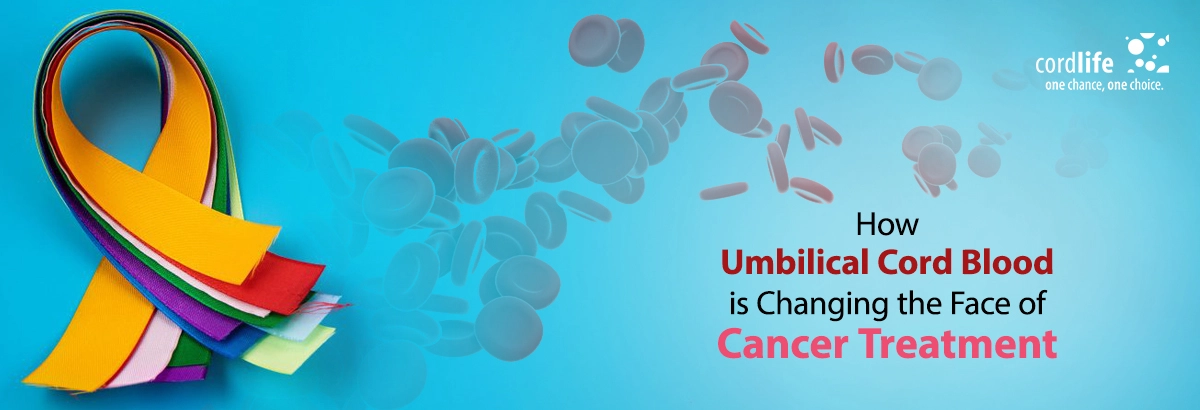Table of Contents
Saving the umbilical cord blood can save lives. Presently, umbilical cord blood has the potential to treat more than 80 diseases, including some common types of blood cancer. Here’s all you need to know about how umbilical cord blood stem cells are revolutionising the way cancer treatment.
A cancer diagnosis is no more a death sentence. With advanced medical technology and treatment lines, it is possible to beat cancer. One such medical development is the use of umbilical cord blood in treating certain forms of cancer.
Saving the umbilical cord can save lives. Umbilical cord blood is a rich source of stem cells and has the potential to treat more than 80 diseases including cancers such as Lymphoma, Leukemia, and Neuroblastoma.
Umbilical cord blood collection is a risk-free and painless process. Umbilical cord blood stem cells can cryopreserve through cord blood banking.
How Umbilical Cord Blood Can Be Used in Cancer Treatment
The first umbilical cord stem cell transplant took place in Paris in 1988. The patient was a small boy suffering from Fanconi anaemia, a life-threatening genetic blood disease. The patient’s sister became the donor. A prenatal diagnosis of his sister confirmed that she was HLA identical and not affected by the Fanconi mutation. After she was born, her cord blood was collected and sent for umbilical cord preservation through cryopreservation. Storing the umbilical cord properly is one of the most important aspects of cord stem cell banking. Saving the umbilical cord for decades is possible with cryopreservation.
The first transplant in human history was successful. Ever since umbilical cord blood stems cell transplant has become a popular line of treatment for people suffering from childhood cancer. Globally, more than 6000 cord blood stem cell transplants, from unrelated donors, have been performed.
Advantages of Umbilical Cord Stem Cells Transplant
Stem cells found in the umbilical cord offer major advantages in a transplant. They are more effective than bone marrow transplants as they pose a lower risk of GvHD (graft versus host disease). GvHD is a serious and life-threatening condition that can happen at any time after a transplant. However, the chances are lower when the patient uses umbilical cord blood stem cells. These stem cells are easier to collect than bone marrow stem cells. In addition, these take a lesser time for processing and pose a reduced risk of transmission of infections. It means, there is a lesser need for stringent antigen typing. Most importantly, the rate of rejection is much lower in umbilical cord blood stem cells transplant.
The decreased risk of transmission of infectious diseases is because umbilical cord blood has never been contaminated. It is so because the umbilical cord blood collects, after collecting data on the pregnant mom’s infection history. Moreover, the collected umbilical cord blood is also tested for infections and contaminations before preservation.
Stem cell collection at birth is a simple process. Since the umbilical cord blood collection happens before the baby’s immune system is fully developed, the cord blood stem cells can use even if the donor and patient cells have a less perfect match. Also, with umbilical cord banking, you can save cord blood stem cells for years and use them as and when required. More than 80+ diseases can cure using stem cells saved through stem cell cord blood banking.
How Does an Umbilical Cord Blood Transplant Cure Cancer?
An umbilical cord blood transplant does not work directly against cancer. Umbilical cord blood stem cells help the body to produce new stem cells to replace the cancerous cells after high radiation and chemotherapy. Stem cell transplant is particularly effective in treating leukaemia, lymphoma, neuroblastoma, and multiple myeloma.
Need More Information About Cordlife Stem Cell Banking?
Book a FREE Presentation Now
Conclusion
The best way to procure umbilical cord blood stem cells is through cord blood banking. If you are an expecting parent, consider cord blood banking to secure your baby’s health in the future. Cord blood banking can not only save your baby’s life but also the life of their siblings and other close family members.
